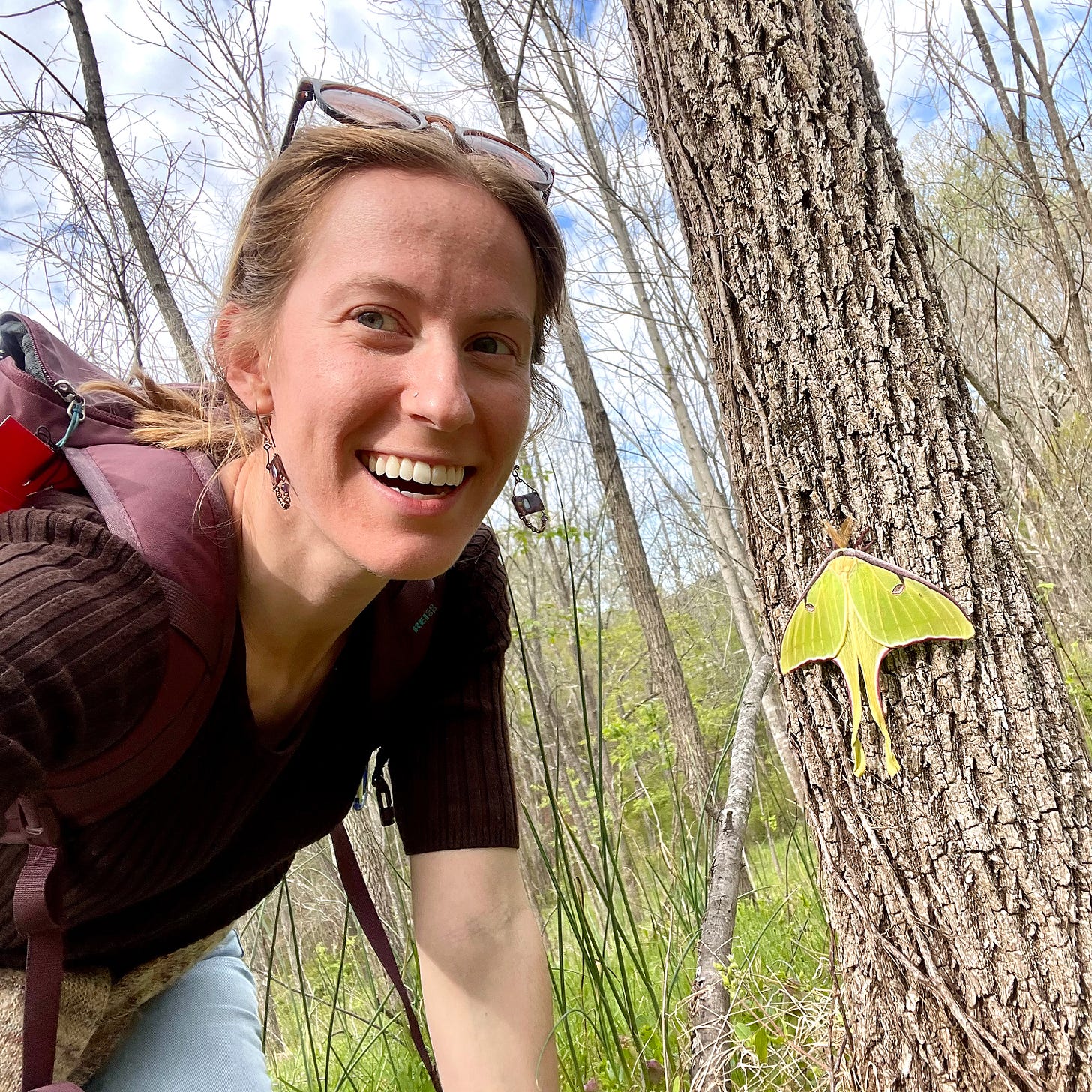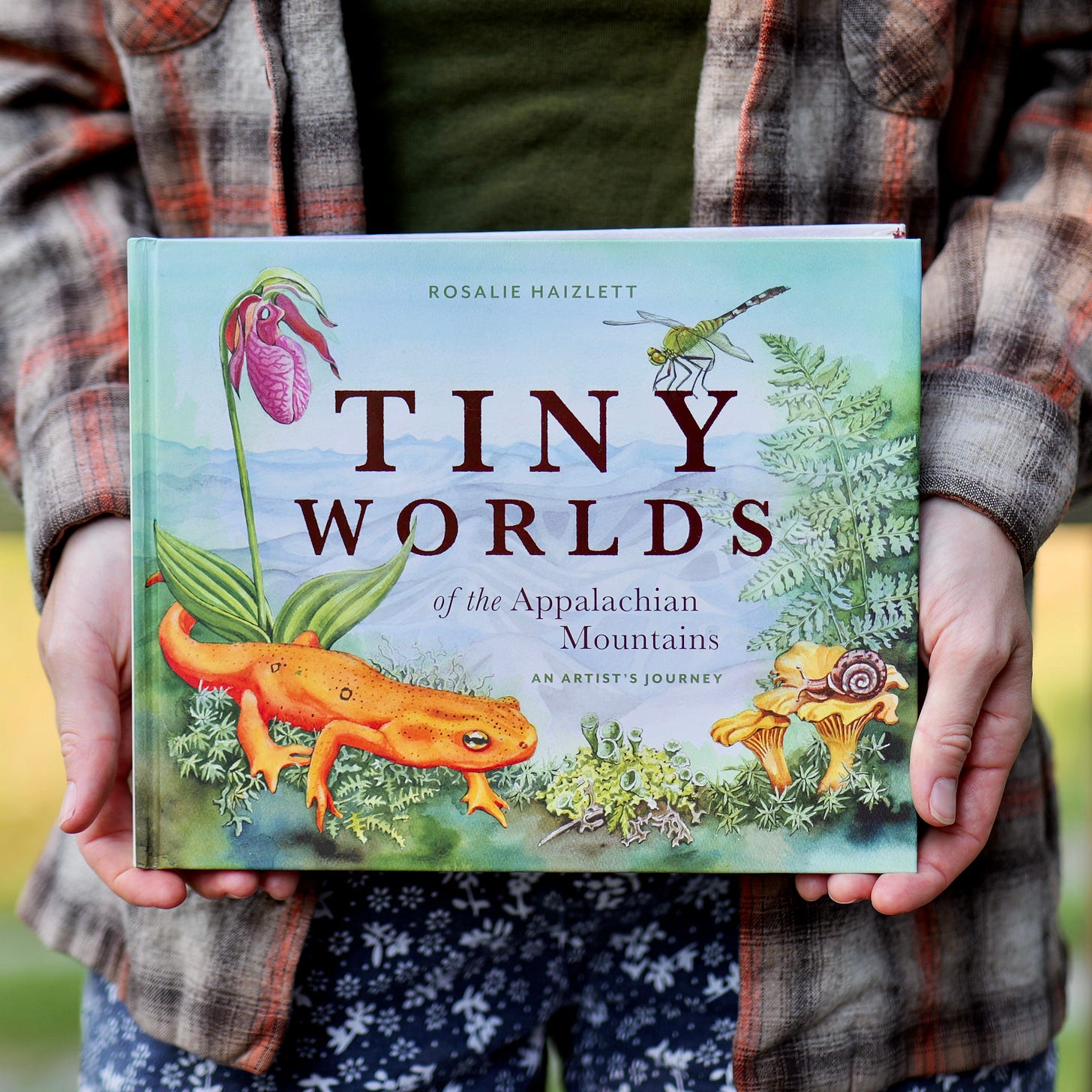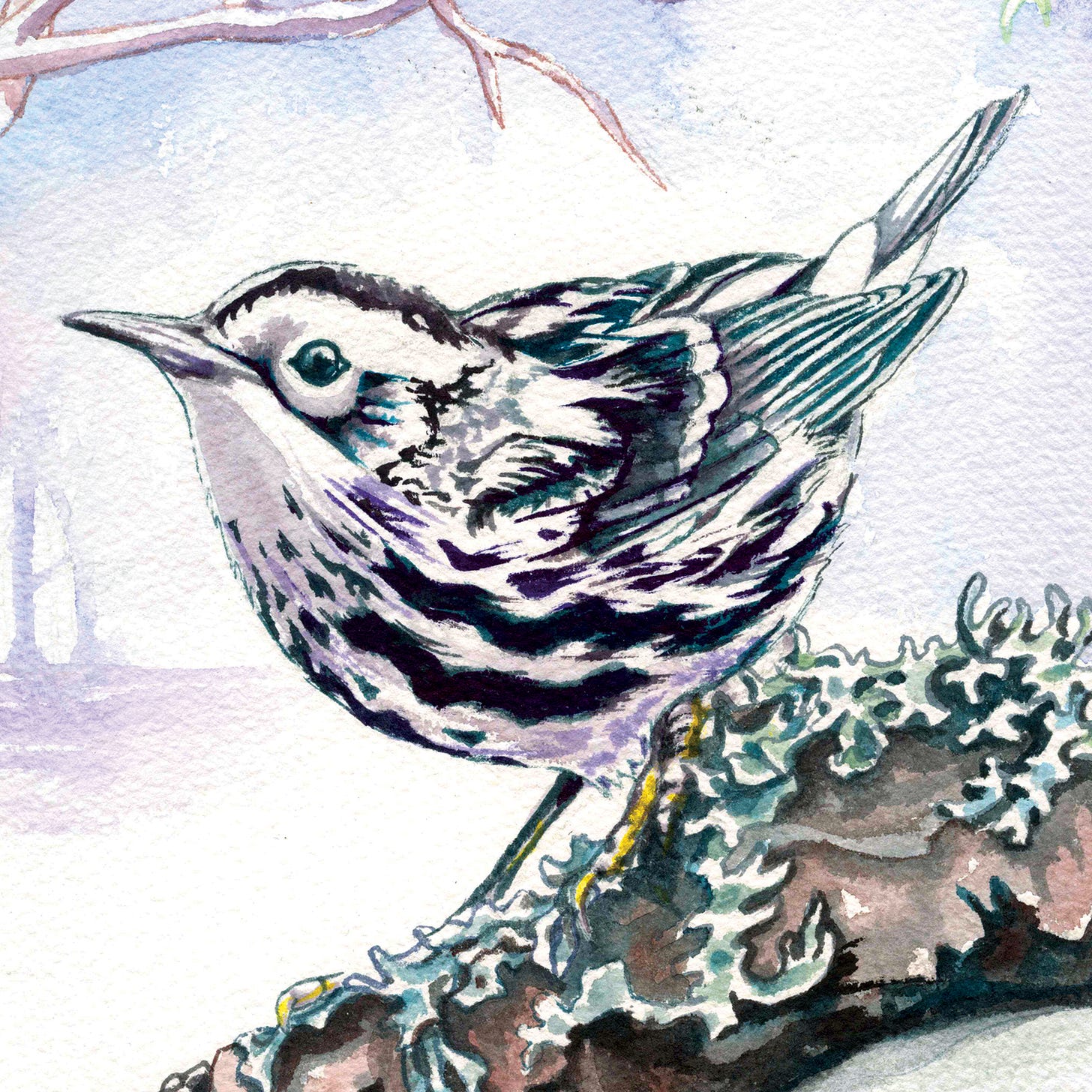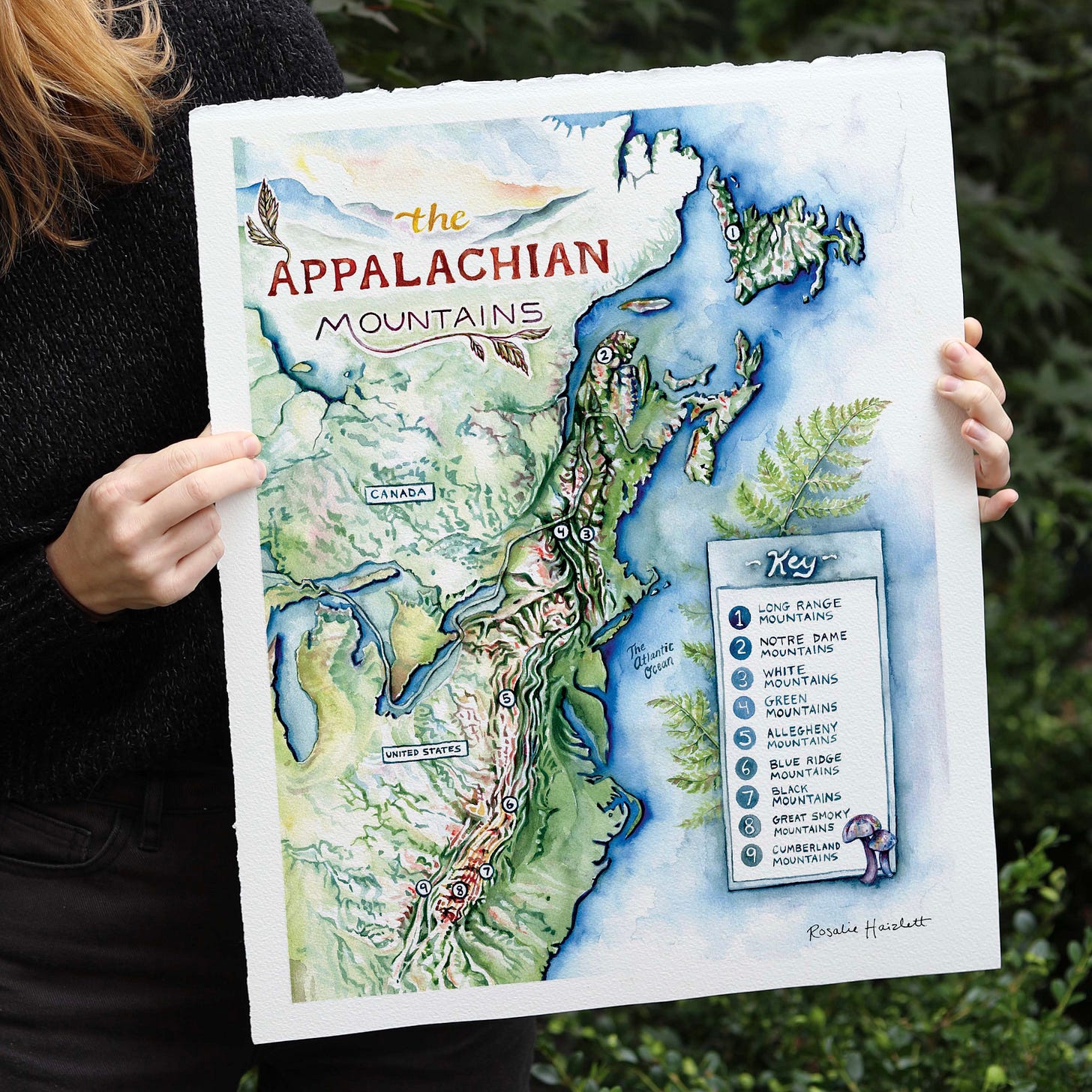I have lost track of how many times someone has suggested that I narrow the scope of one project or another—think smaller, closer, tighter, they say. Especially over the past few months, this seems to be a recurring theme. But still: whether they’re good, bad, exciting, or scary, possibilities and ideas skid around my mind, run rampant on little scraps of paper, swirl around me in a Fantasia-like dance.
This month’s featured guest, Rosalie Haizlett, provides the perfect antidote. Her new book, Tiny Worlds of the Appalachian Mountains, is a beautiful reminder that wherever you are and whatever you notice, HOW you experience it matters. Rosalie’s curiosity and close attention have led her into an ongoing relationship with the plants, animals, fungi, and lichens near her home in West Virginia. By taking the time to kneel down, sketch and scribble notes, take photos, talk to experts, and wonder—and share her discoveries with us!—Rosalie’s work feels like just the invitation I need to stay with the quiet, small things that draw me in and call me closer, too.
As I write, Juncos, Black-capped Chickadees, and White-throated Sparrows pause in the pussy willow, then flit away; I see the shadow of a Turkey Vulture before the bird itself flaps past. What’s happening right now near your home? How will you pay attention, even for a moment?
Interview: Rosalie Haizlett
What sort of work do you do?
I am a nature illustrator and author. Through my art, I share my appreciation for the natural world by creating vibrant watercolor art prints, illustrated nature books and in-person and online classes to help others connect to their own surroundings using their creativity.
What aspect of your work are you excited about?
I have fallen in love with the book-making process. It’s long and tedious, but after freelancing for a few years and working on shorter-term projects, it feels like such a luxury to be able to dive deep into a single project for a few years at a time. After releasing my second book, Tiny Worlds of the Appalachian Mountains, in September, I’m currently coming up with new ideas for books and the possibilities are so exhilarating!
How are science, art, and writing part of your work, and how is the interaction between these areas important to you?
My work always begins with an observation outdoors that either stops me in my tracks because of its beauty or fills me with curiosity. I take photos of what I see, jot down notes about the experience, and do a quick sketch if I have my notebook on me. Eventually, many of these observations make their way into my artwork and writing. My camera currently has 42,000 photos on it—and 90% of them are fun nature finds! I love working from my own photos and observations because it’s an incentive to go outside as often as possible and really look closely for small bits of wonder. I also feel much more connected to my work because I get to relive the experience while I’m painting or writing about it.
Is there a particular environmental problem that feels important to you? What do you do about that?
I grew up on a farm that was heavily strip mined, farmed, and logged in the mid-1900’s, and the scars from that extraction are still evident all these decades later. It’s a constant uphill battle to keep the invasive species at bay so trees can grow back, and my parents are still working to remediate the acid mine runoff. Growing up and seeing these impacts, I sometimes felt like the farm (and the greater Ohio Valley region) was too far gone. It wasn’t until I began to look more closely at my surroundings that I realized that there are actually lots of resilient plants and animals that continue to call the farm home. Now, I find that I’m particularly drawn to landscapes like this, that have suffered but are still vital to flora and fauna. I feel moved to share their value by celebrating the creatures that can be found there. No slice of nature is too far gone!
How does your perspective affect your work?
Having grown up in (and continuing to reside in) a rural, often misunderstood state like West Virginia plays a deep role in my work. There are so many artists and writers who make work about popular outdoor recreation regions—such as Colorado and the Pacific Northwest—but very few nature-focused illustrators and authors in my state. This feels like a unique opportunity for me to make place-based work that helps people in my region feel a deeper sense of belonging and pride. And I hope that this leads to a desire for environmental stewardship.
What influences and inspires you?
So many things! Folk music, the poet Mary Oliver, owls, my parents, graphic novels, picture books for kids, collage art, antique postcards, handmade paper, my friends that run small businesses, road trips, the woods in wintertime when the moss and lichen really show up, the naturalist artist Beatrix Potter, canoe trips, the wind on my face during bike rides.
What's your favorite method or technique to learn something new? (from Kate Rutter, 013)
Whenever I see a cool piece of art, I’ll take a photo of it or screenshot it, then try to figure out what materials/techniques the artist used. Then I’ll try to implement a touch of that technique or medium into my sketchbook. For me, sketchbooks are such an important place for this type of thing: for researching, problem-solving, and doing a bit of sleuthing to see how folks create the types of things they do.
Are you interested in collaborating with other groups or individuals on science-art-writing projects?
Yes! I often collaborate with organizations on various science-related projects. I’ve illustrated a giant welcome sign for a National Wildlife Refuge, created 14 illustrated beer labels for a series that raised awareness for animals that live in Pennsylvania’s watersheds, and I’m currently working on a recurring illustrated column called Art in the Field for Highland Outdoors Magazine, where I shadow wildlife biologists working in West Virginia and communicate their work through illustrations and journal-style writing. I also just had a series published in The Washington Post about the life cycle of leaves. That was a fun one!
Thanks so much, Rosalie!
If you’d like to learn more about Rosalie’s work, you can visit her website, follow her on Instagram, or subscribe to her Substack!








Beautiful illustrations (that warbler 😍) - thanks for sharing with us.
Thanks so much for having me on Twig & Ink, Lisa! Hope to connect in person one day soon. :)